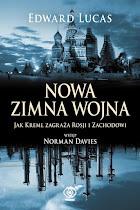Europe.view
Who’s captive now?
Jul 17th 2008
From Economist.com
A question about Russia
Each year since 1959, in the third full week of July, America has marked Captive Nations Week. The original Congressional resolution is worth reading. It highlights both what the drafter, the late Lev Dobriansky, saw as the success of the United States in “e pluribus unum” (making one nation out of many), and the failure of Communist empires to do the same. The continued celebration of the week is something of a totem for old cold warriors who believe that the victories of 1989-91 are still sadly unconsummated.
Yet the resolution's wording rings oddly. The list of “captive nations” reads: “Poland, Hungary, Lithuania, Ukraine, Czechoslovakia, Latvia, Estonia, White Ruthenia, Rumania, East Germany, Bulgaria, mainland China, Armenia, Azerbaijan, Georgia, North Korea, Albania, Idel-Ural, Tibet, Cossackia, Turkestan, North Viet-Nam, and others [sic, throughout]”.
It is hard to find rhyme or reason in that, even in its original context. Cossacks are Russian patriots; their beastly treatment under Soviet rule does not equate to a desire for national independence. Others whose history gives them every cause for complaint, such as the Circassians, don't appear at all. Is the aim of the resolution ethnic self-determination, or the destruction of communist rule? As it stands, the two are conflated.
Moreover, the phrase “Communist Russia” is wince-making. Many Russians find it unfair or outright racist to link Soviet rule, under which more Russians perished than any other nationality, with Russia itself. From a Russian point of view, it can be argued that the motherland was the greatest captive nation of all, its destiny hijacked by murderous ideologues (many of them, incidentally, not Russians).
A seminar this week in Moscow may mark the start of another push to have the resolution revised. One of the initiators, the Russian-American academic Edward Lozansky, believes that a differently phrased resolution could be the start of a real rapprochement between modern Russia and the countries of central and eastern Europe.
But there are two snags. One is that Soviet rule, particularly in its latter decades, did indeed mix Russian chauvinism with proletarian internationalism. The forcible Russification policies in the Caucasus, the Baltic states and elsewhere have left lasting bitterness.
Secondly, the Russian Federation is a work in progress. Around a fifth of the population are not ethnic Russians. Some are deeply integrated and count themselves as patriotic citizens of a common state. But others aren't. The spectrum of discontent ranges from separatists pursuing their cause by violent means (so far, thankfully, confined to the Caucasus) to moderate demands for greater cultural autonomy.
Bad government stokes such grievances, just as the rule of law and political freedom defuse them. America conquered the Sioux and the Cherokee, and treated its aboriginal population abominably for decades. But the political and legal systems at both state and federal levels, albeit imperfect, now work well enough to make separatism both fanciful and unnecessary.
The pervasive feeling of injustice and voicelessness in the Soviet system stoked captives' desire to be free, and fatally corroded a system already vulnerable because of its economic failure. But if Soviet legitimacy was based on phoney ideology, what of the new Russian state's identity? Is it a Swiss-style federation of equally sovereign peoples? Or is it an ethnically Russian state in which non-Russians are outsiders, guests or immigrants? The first would require an unprecedented degree of tolerance from ethnic Russians. The latter would relegate the 20% of the population to permanent second-class status.
Ever since 1991, the answer, usually unspoken, has been “don't know”. Next week's Europe.view will suggest some answers—and, if anyone is puzzled, have more on the mysterious country of “Idel-Ural”.
You are here: Home > Russia > Europe view no 90
Saturday, July 19, 2008
Europe view no 90
Posted by
Edward Lucas
at
7:10 PM
![]()
Labels:
Europe View,
Russia
Social bookmark this post • View blog reactions
Translate: Portugues | Francais | Espanol | Deutsche | Italiano | Chinese | Korean | Japanese
Subscribe to:
Post Comments (Atom)
























No comments:
Post a Comment